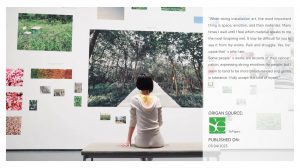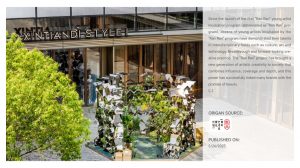I believe many of you still remember the grand occasion of checking in for the “Fiction” exhibition last year. When we learned that the HAO Art Museum was hosting Daniel Arsham’s new exhibition “Now Now”, we wisely chose to go on a non-weekend to explore the exhibition, and we were full of confidence. Mandi invited Juju Wang, a friend of “Shangliu TATLER” and the famous installation artist, to attend the exhibition.
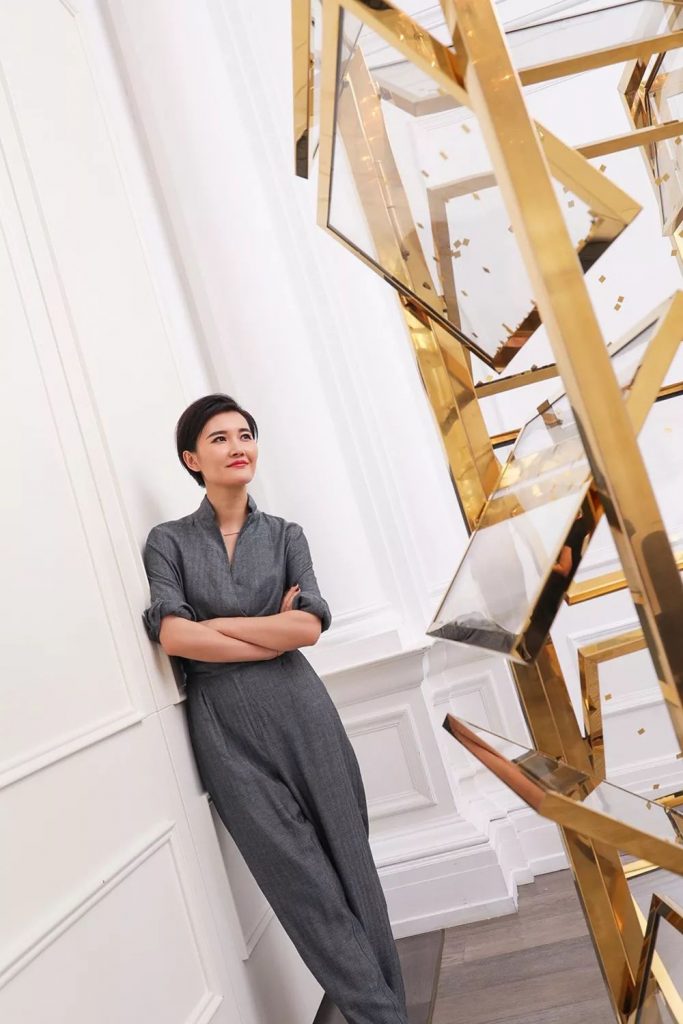
In the spacious exhibition hall on the first floor of the HAO Art Museum, Daniel Arsham transformed the building into an installation. Lighting and environmental layout all have an impact on the presentation of the work. Daniel even specially created a new version of the work for the HAO Art Museum. As a visitor, while being completely immersed in the artist’s expressive tension, you will also be surprised by the precise arrangement of everything around you – because no matter which angle or method you shoot from, the effects are amazing and different. So in the end, our operation to avoid the crowd was really (yi) successful (chang) successful (jian) (nan).
01
The future is the inheritance of the present
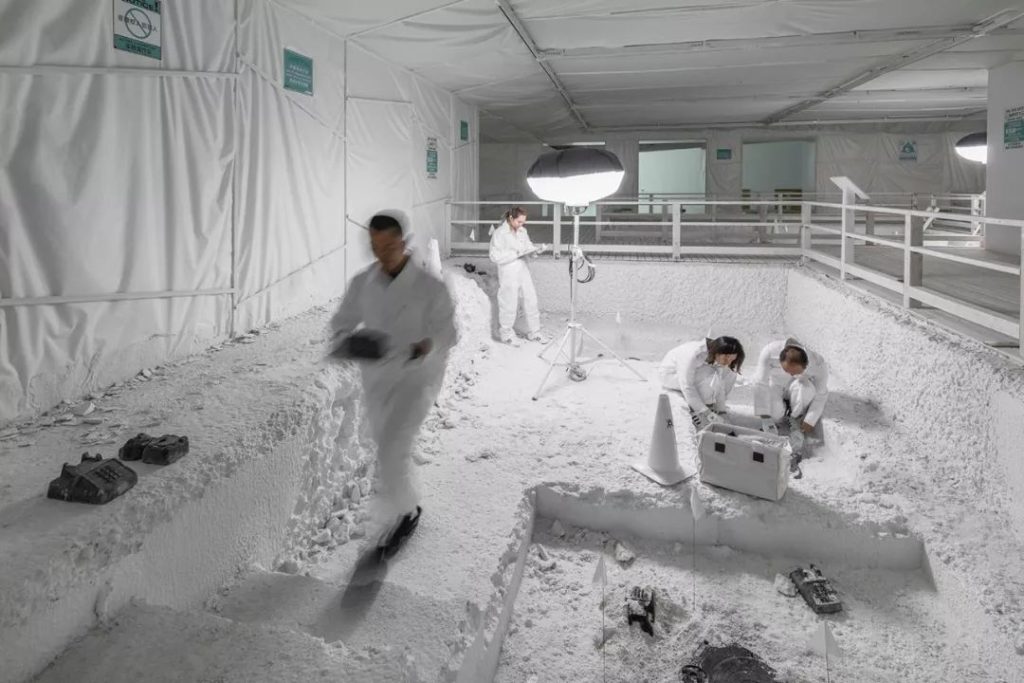
“Future Excavation Site”, Daniel Arsham, exhibition view at HOW Art Museum
The exhibition proposes the concept of “future relics” and turns the scene into a “fictional archeology” site, allowing us in the exhibition to blur the linear timeline and travel between the past, present and future. The current moment is not only the excavation and inheritance of the past, but also the pavement and preparation for the future.
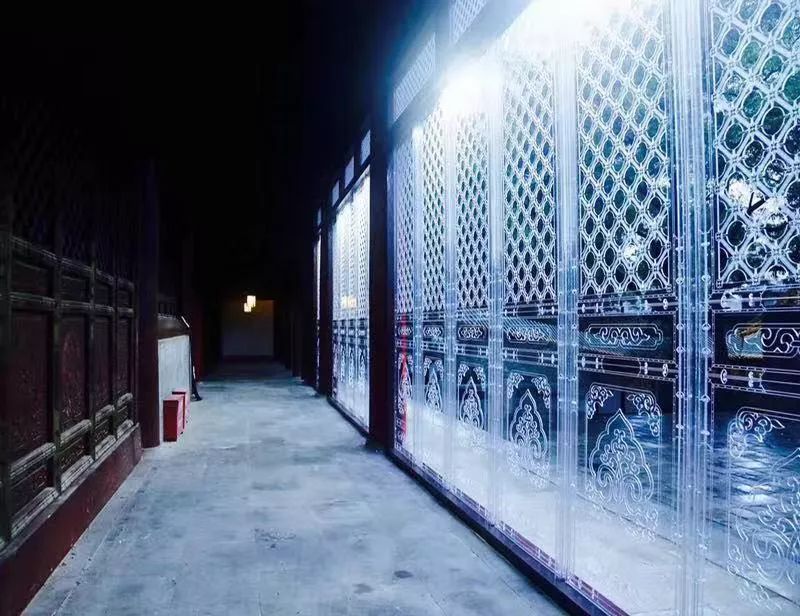
Juju Wang, Palasee, installation, 2016
Just like the intangible cultural heritage that Juju has been working on, although it has attracted everyone’s attention, after receiving national protection, most of it is only collected in museums. In Juju’s view, this cannot be called inheritance, and it will only gradually disappear its essence. It needs to be integrated into our lives.

Juju Wang, Sea-cret installation, Swarovski crystal, acrylic, etc., 2019
Juju, who grew up in the United States, is more interested in traditional Chinese culture. By chance, since returning to China in 2014, intangible cultural heritage and traditional Chinese culture have been deeply rooted in Juju’s heart. Behind her search for inspiration for artistic creation are stories told one after another of intangible cultural heritage. These stories about mortise and tenon joints, filigree, gold foil, Qiang embroidery, etc. are quietly in the towns, villages, and homes to which they belong, waiting to be discovered by people from the outside world, and taken away to share with the people around them, and they are silently looking forward to it. Their stories can be heard by more people.
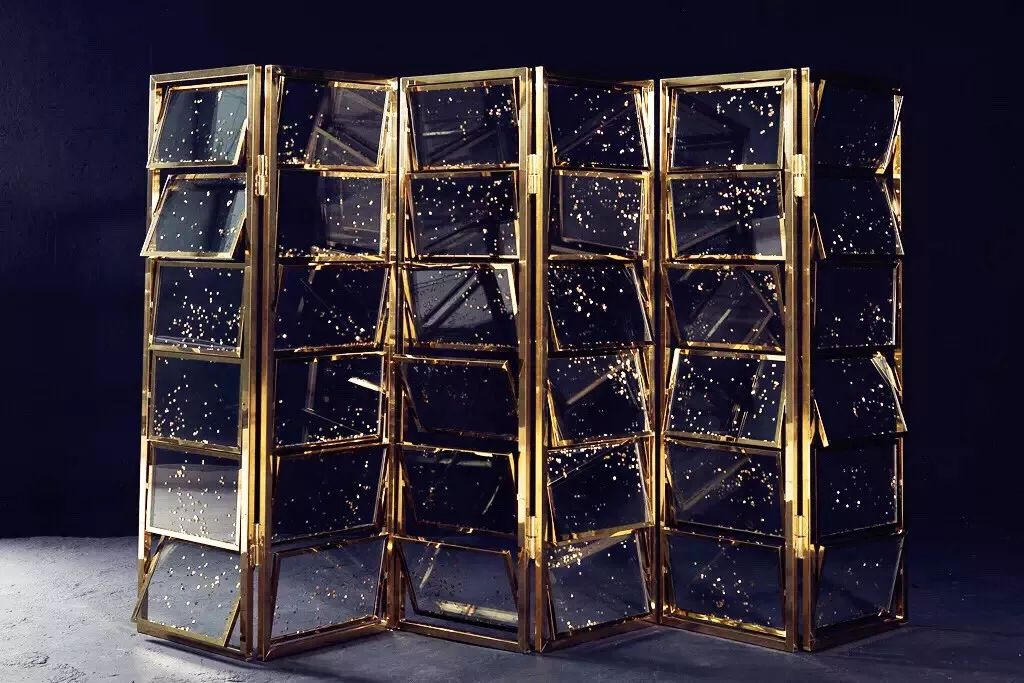

Juju Wang, gold foil screen, installation, 2017
Gold foil is an intangible cultural heritage from Nanjing. It is one of the traditional Chinese handicrafts and is known as “one of the unique skills of China”. This is also one of Juju’s many works that incorporates intangible cultural heritage. In the past, gold foil was exclusively used in royal palaces and temples, representing eternity and prosperity. Juju used gold foil as the main material for this work, allowing more people to access gold foil and making it closer to people. As the liquid in each fan blade flows, the gold foil will float and sink. The originally static screen, illuminated by gold foil, interacts with the light in the space to weave it into an art of light and shadow.
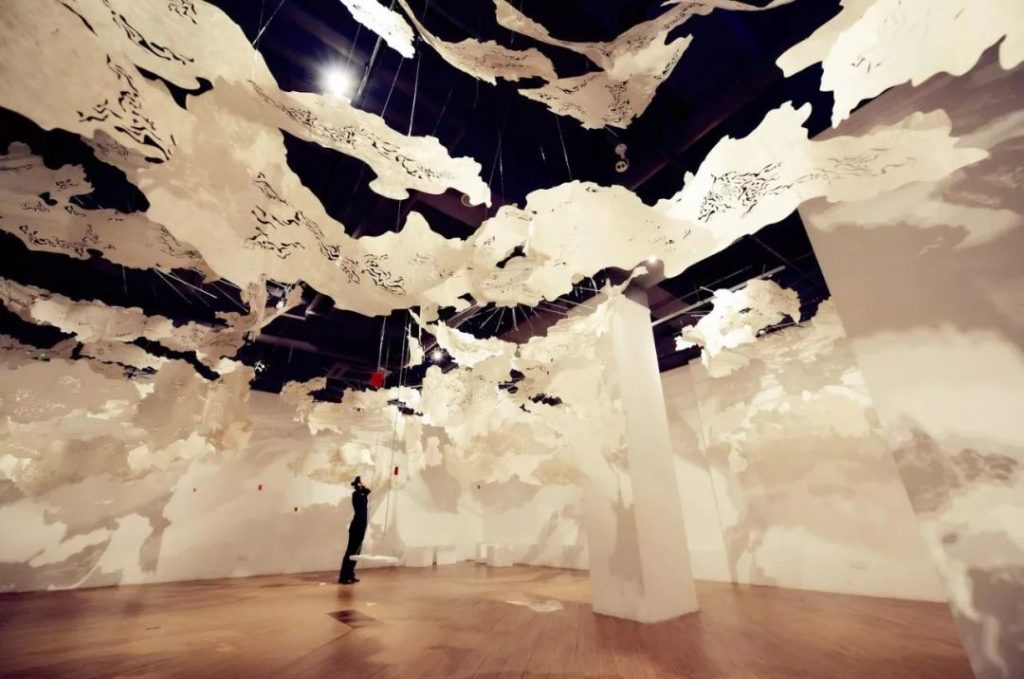

Juju Wang, Cloud House, installation, 2015
Her masterpiece “Cloud House” is closely related to the Dai paper of the Dai people. Dai paper is called “Galasha” by the Dai people in Manzhao Village, Xishuangbanna. It is tough, waterproof, not afraid of corrosion, not afraid of mosquitoes, and can be passed down for hundreds of years. “New Seal Script Yunnan General Chronicles” records: “Mengdingba was able to make a kind of large white paper from the bark of paper mulberry tree, which is especially tougher than foreign kraft paper and cannot be torn.” With more than 800 years of inheritance, local people still insist on making paper by hand. , the ingenious life is original and simple, delicate and meaningful. This simple village is a utopia and a paradise in Juju’s heart.

Juju Wang and gold foil screen
In addition to complementing traditional Chinese culture, it is not difficult to see a commonality among Juju’s many works, which is that they are highly interactive. She doesn’t want the artwork to be displayed from a high position. She hopes that people can get closer to it. Even if she doesn’t understand the work, she is still willing to take the first step and approach it with curiosity and questions in her heart. Art, so as to understand the creative concept behind the artwork, how it is constructed, and the inspiration that the audience may get.
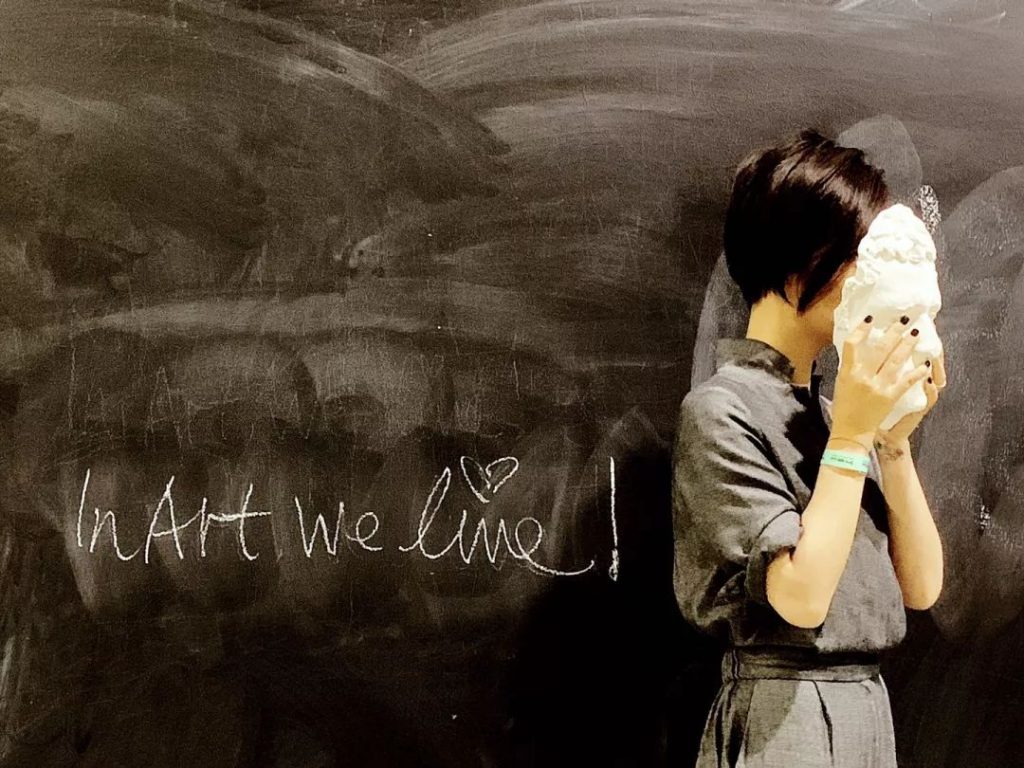
Juju Wang visits the exhibition
Juju is also an “Optimistic” optimist. “I think as long as you express yourself well, the world will always give you a chance to show yourself.” She is used to looking at challenges from an optimistic perspective, so she is not easily confused and is more It’s easy to get out of trouble with a good attitude. Now, or in the present, this is a matter of time, or it may just be a manifestation of mentality.
02
The present is a relic of the future
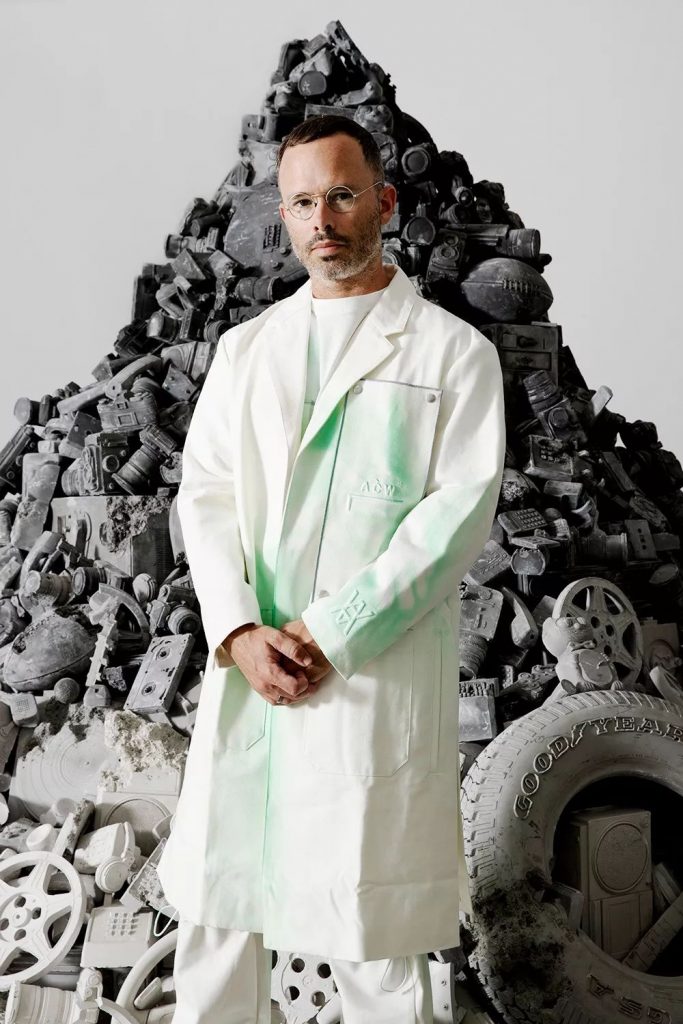
DANIEL ARSHAM
Daniel Arsham
The artistic creations of Daniel Arsham, the artist in this exhibition, are all based on architectural forms. He develops architecture into a broader field rather than limiting it to its own fixed use. He is more concerned about the constant switching between the present and the future, reality and imagination. He petrified the objects we have in today’s world, and weathered and eroded the cartoon characters we are familiar with. By blurring the timeline, the objects around us appear in an unfamiliar form, allowing those who enter the “fictional archaeological site” to The audience can’t help but wonder, “When and where am I at this moment?” This is the artist leading the audience to review everything in the present from the perspective of the future.
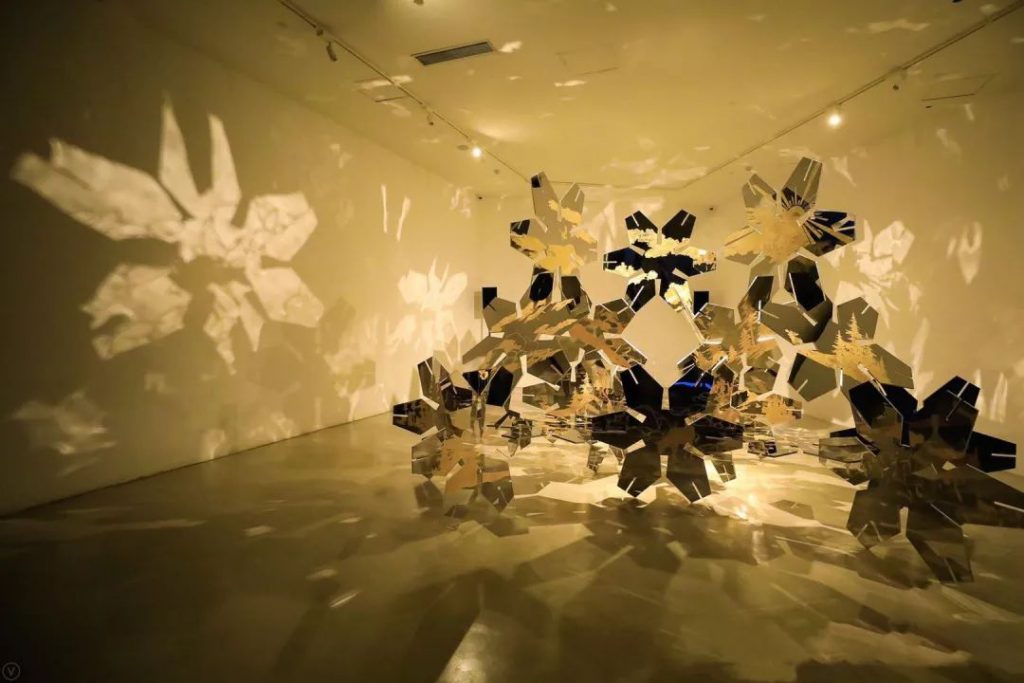
Juju Wang, Snowflake, installation, 2017
Similar to Daniel, Juju studied architecture and engineering in the United States for nine years. Her installations are transformed into various artistic structures through model building and sophisticated calculations. But she is more romantic at heart. Although she was born in science and engineering, she finally chose to combine sensibility and rationality to convey her ideas about life through her works.

This time, we took Juju to the Hao Art Museum, through the entire exhibition space arranged by Daniel, and into a digital world that is accelerating dematerialization. Here, if you want to convert one idea into another, you first need to destroy it before you can create something new. She took the mask made of chalk and transformed it into a simple “In Art We Live,” the cry of her heart. She survives in art, but the person who has the greatest influence on her is actually her daughter. The first thing her daughter taught her was to “be patient”, allowing her to face all the things she encounters in life with more patience. Many of her works are inspired by spending time with her daughter. “She will bring you back to that innocent feeling and teach you how to complete something patiently. Children also have a big heart and they know how to be tolerant.”
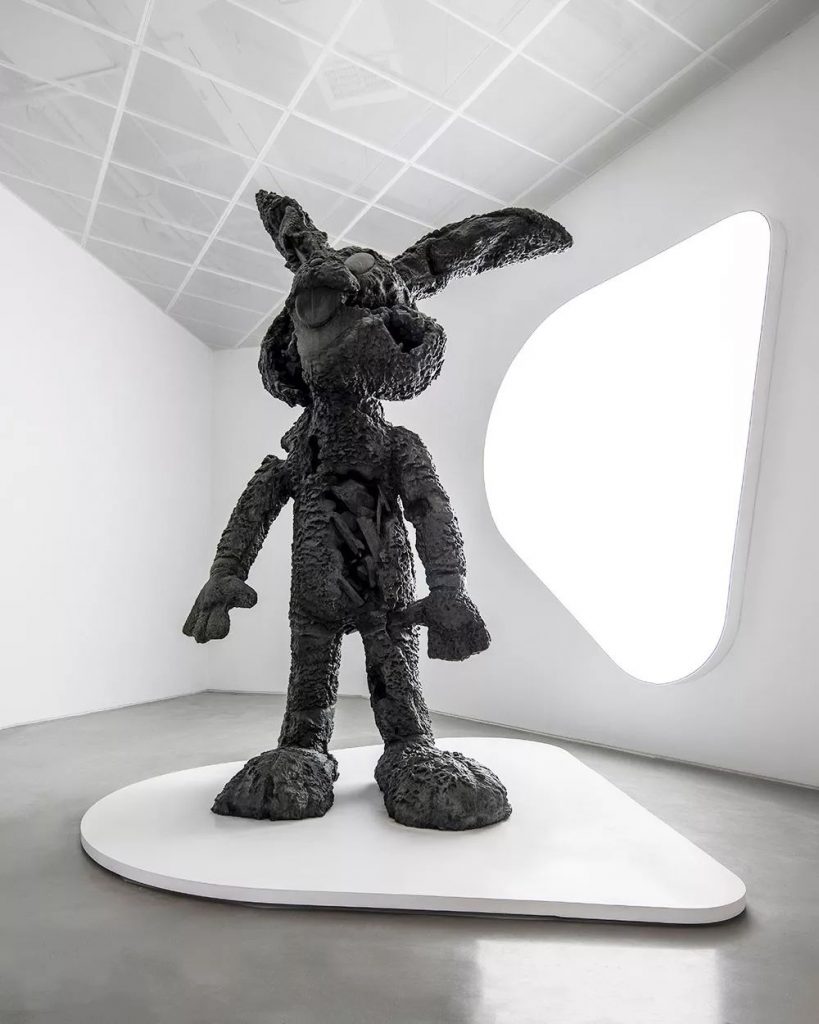
“Bonnie Rabbit”, Daniel Arsham, exhibition view at HOW Art Museum
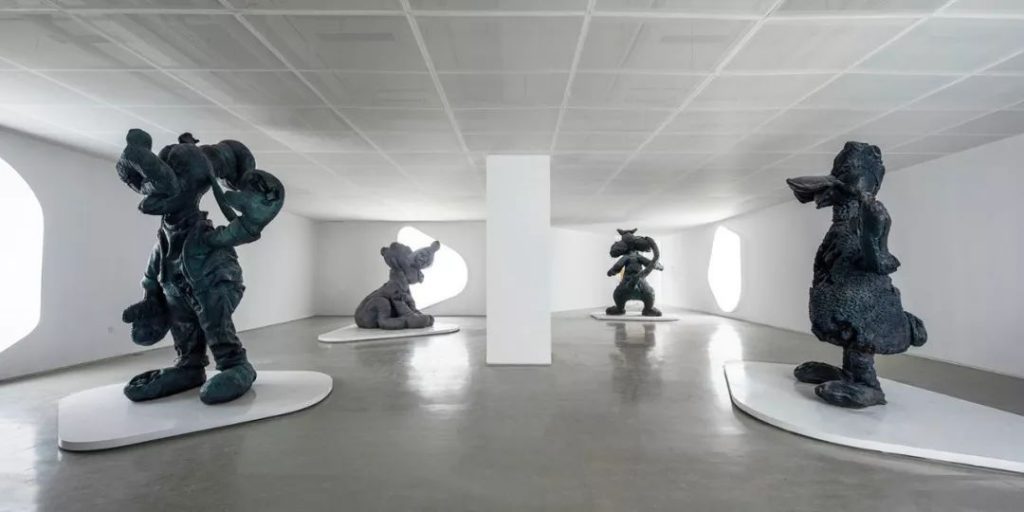
“Animal Forest”, Daniel Arsham, HOW Art Museum exhibition view
Just like “Bonnie Rabbit” at the entrance of the exhibition and “Animal Forest” in the exhibition hall, Daniel was influenced by his son and focused on the fresh, lively and youthful elements of the moment as his creative inspiration. It reminded him of his colorful childhood, when curiosity and imagination had not been eradicated by growth, and everyone was an artist.
However, there are always people who are young.

03
now in now
PERPETUAL PRESENT
Daniel Arsham
Exhibition period: June 29-October 24, 2019 (closed on Mondays) Tickets: 120 yuan
Opening hours: Monday to Friday 13:00-22:00,
Weekends: 10: 00-22 : 00, last admission at 21:30
Exhibition location: Hall 1/2/3/4 on the first floor of Hao Art Museum (Shanghai)
(No. 1, Lane 2277, Zuchong Road, Pudong New Area, Shanghai)
Let’s go through the dreamy “glass box” entrance together and enter the world of “Now Now”.

“The Wall”, Daniel Arsham, exhibition view at HOW Art Museum
Passing through the giant “Bonnie Rabbit” at the door, you go straight to the entrance of “The Wall of Excavation”. The layers of plaster walls, from shapeless at the beginning, to the final silhouette of a regular adult. Walking through these layers of walls is like looking for your complete self. If you stand at the entrance of the moment, you are looming, so close and yet so far away. These are the only paths you must pass before reaching the end.

Exhibition site at Hao Art Museum
Passing by the poster wall, the irregular collage of photos seems to be recording different stages of oneself, which are all evidence of time. Many people like to keep time markers such as movie ticket stubs and bus tickets. When they pick it up a few years later, they will still remember who they watched the film with and who they traveled thousands of miles for.

“The Future is Written”, Daniel Arsham, exhibition view at HOW Art Museum
Follow the sound, watch the images on the TV, and enter a space surrounded by blackboards. There are piles of white on the ground, clocks, cameras, baseballs, sneakers, radios… If you pick up a piece, you can write something on the surrounding blackboards. These are things of life, fragments of memory.

“Animal Forest”, Daniel Arsham, HOW Art Museum exhibition view
Entering “Animal Forest”, those plush cartoon toys that once appeared on our bedside turned into bronze statues, either waving or sitting on the floor, appearing eroded and damaged, conflicting and intuitively showing the “time” Collapse”.
Turning a corner, you can see a giant bow hanging in the sky. Contrary to the rigid and immovable nature of the building, it stretches between the two walls like a soft fabric.
Walking up the steps, you are completely immersed in the archaeological site. The entire space is divided into different exploration squares, each with different “relics”. These “unearthed cultural relics” were sent to the laboratory, where they were analyzed and studied. We can even experience it ourselves. Imagine the future, when we all disappear in the long river of time, what will be left behind and what will be remembered?

Exhibition site at Hao Art Museum
who cares. Thinking so much about what to do, don’t we only have now?
This moment is the starting point and the end point. Now, now.
Producer: Cherie
Interview: Sherry Written and edited by: Anson, Christine
Interviews and behind-the-scenes photography: Gao Feng, Chen Xiuping, Cai Yiqiang
Exhibition shooting and editing : Anson Photography: Zhou Qimei Editor: Vicky

